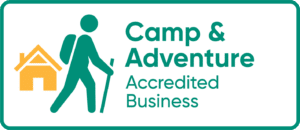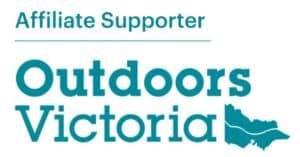Teachers today face the constant challenge of keeping students motivated and engaged. With shorter attention spans and the endless distractions of the digital world, it’s more crucial than ever to bring new ideas to the table to ignite a spark in young learners. While classroom lessons are essential, sometimes the most powerful solution can come from outside the classroom walls.
Physical activities have many excellent benefits, including physical and mental stimulation, and helping students stay motivated. Here at PGL, we have many fantastic opportunities for students to experience activities to spark joy and motivation. Our action-packed school camps are full of physical activities for students to immerse themselves in, leaving them inspired by their new adventures.
Why motivating students is important
When students are engaged, it usually means they’re motivated and ready to learn. Engaging students during their education brings significant benefits for you, the teacher, as it is extremely rewarding when students take something valuable from your teaching. Keeping students engaged can be challenging, especially when attention spans are shorter than they used to be.
This is where a little bit of physical activity comes in handy. Have you thought about a little light-hearted exercise or two before the start of your lessons to help create a buzz amongst students and boost their motivation? If you feel that student motivation and engagement are a little low and you need an exciting idea or strategy to ignite the spark in your students, then our motivation-boosting tips below —and a PGL school camp—might just do the trick.
Offer regular encouragement
Sometimes, students can feel they aren’t praised enough or don’t feel they are getting much from their education. This leads to a loss of motivation, and you may be able to sense this from a student’s behaviour or any work that has been submitted. Ensuring positive affirmation can have a significant impact on students, making them feel valued and that they are doing well.
Creative learning techniques
Keep things interesting by mixing up the structure of lesson delivery. Sometimes, lessons with a quirky element can ensure monotony doesn’t become an issue. Keep students guessing by introducing fun and engaging ways that will aid motivation. Having a few minutes devoted to classroom-based exercises at the outset of your lesson can help boost those endorphins. There is nothing like it to help children better absorb the educational information you feed them.
Reward and incentivise
You can offer a small reward for completing a task or create a challenge requiring students to split into teams. This doesn’t have to be a regular occurrence. Still, devising tasks that involve an element of competition will help immediately capture attention and motivate students, especially if there is the possibility of a cool prize to play for.
Fun and informative
Keeping things fun and entertaining is essential! Children love to laugh, play and interact, and offering a platform that maximises their ability to do this will put smiles on faces and help them flourish. We’re pioneers of fun and happiness at PGL and want to see every child laugh and smile their way through our school camps.
The science behind why physical activity works
The idea that physical activity and learning are connected is more than just a theory; it’s backed by quite a bit of research, both in Australia and around the world. For a long time, physical education was seen as a break from “real learning.” However, recent studies show that movement is an important part of the learning process itself.
In fact, a report published by Play Australia, which reviewed both Australian and international research, found a clear positive association between children’s physical activity levels and their academic achievement. The study suggests that schools can even increase the time children spend on physical activity without negatively impacting their grades, as the educational benefits of exercise can lead to more efficient learning.
Moving the body has a direct, positive effect on the brain’s ability to learn, and here’s how:
Endorphin release
When students take part in physical activities, their bodies release endorphins, which act as natural mood boosters. This helps reduce the feelings of stress and anxiety, creating a more positive and relaxed mindset.
A student who feels happy and less stressed is more likely to be motivated to learn. Incorporating regular physical activity provides a healthy outlet for students to manage their emotions and reset their minds, leading to better focus and a more positive classroom environment.
Improved cognitive function
Exercise increases blood flow to the brain, which can improve key cognitive functions. The boost in circulation can help improve memory, strengthen concentration, and enhance problem-solving skills.
By taking part in different activities, students are not just moving their bodies—they are training their brains to be more alert and ready for learning. The educational information you give them will be absorbed more effectively after a period of physical activity because their brains are essentially “warmed up”.
Building self-confidence
Successfully completing a physical challenge, whether it’s climbing a wall or navigating a low ropes course, gives a student a powerful sense of accomplishment. This builds self-confidence, which is a key component of motivation.
When students see what they can achieve physically, they develop a “can-do” attitude, which can carry over to their academics. This newfound belief in their own abilities encourages them to take on new academic challenges with a more positive attitude.
Physical activities to boost students’ motivation at school
You don’t need a full-day adventure to see the benefits of physical activity. There are many different ways to incorporate movement into the school week to help students stay motivated.
Just a few minutes of physical activity between classes can help students break through mental fatigue, improve their focus and give them a more positive attitude towards the lesson they are about to take part in. Here are some simple, yet effective, ways to include physical activity in the school day:
- Outdoor learning sessions: Take a lesson outside. Whether it’s a science class exploring the school garden or a history class held on the field, a change of scenery can re-energise students and make the learning more memorable.
- Active brain breaks: Incorporate short, 5-minute movement breaks between lessons. Simple exercises like jumping jacks, star jumps, or a quick walk around the classroom can help students refocus their attention and prepare for the next subject.
- Team sports and clubs: Encourage participation in team sports or after-school clubs. These activities teach students about teamwork, leadership, and resilience in a fun, social environment. They also give students something to look forward to, which helps keep them motivated throughout the day.
- Mindfulness and movement: Introduce simple mindfulness exercises that involve movement, such as gentle stretching or breathing exercises. Do these periodically throughout the day to break up the classes and give their brains a chance to reset. These activities can help students manage stress, improve their focus, and develop a stronger connection between their body and mind.
Physical activities for students at PGL school camps
Physical activity is at the heart of what we do at PGL. What epitomises our ethos is our commitment to activity offerings that are a great blend of adventure, challenges, fun and inspiration. Each one offers a unique chance for students to build confidence, resilience, and essential life skills. Here is a closer look at how some of our core activities work to boost motivation and personal development:
Aeroball
Combining trampolining, basketball and volleyball – Aeroball is unique, but it always raises spirits and invigorates children. Students have to constantly communicate and work with their teammates to outwit their opponents, developing excellent communication skills and requiring teamwork to get the ball into the opposing team’s net. This fast-paced activity helps students improve their reaction time and strategic thinking, skills that can be applied to problem-solving in the classroom.
Low Ropes
Low in height but high in physicality, the low ropes are a great test of strength and teamwork. Students navigate a tricky series of unassuming obstacles that require a combination of balance, bravery and boldness to achieve the objective of completing the course.
Working as a team, students have to support and guide each other through the course. This activity is a fantastic way to build trust and shared responsibility. It teaches students that everyone has a role to play and that success often depends on supporting their peers. The big question is, do they have what it takes?
Canoeing
Students learn to paddle and experience the physical demands of paddling with our canoeing activities. Beyond the physical workout, canoeing is a masterclass in engagement and active listening. Students must listen closely to instructions and collaborate with their teammates to master paddling techniques and navigate the water.
It teaches them to work in sync with others and understand the importance of clear communication to achieve a shared goal. Plus, being out on the water offers a peaceful, yet challenging, environment that encourages focus and teamwork.
Boost student motivation and engagement at PGL!
For teachers and schools, finding new ways to motivate students is a constant and rewarding challenge. As we’ve explored, the power of physical activity for students goes far beyond the sports field—it’s a vital tool for boosting cognitive function, building confidence, and encouraging teamwork.
A PGL school camp is an investment in your students’ personal and academic growth. We provide a safe, expertly run environment where students can unplug, challenge themselves, and discover a new, motivated version of themselves.
We offer great school camps, packed full of fun, thrills, and adventure for primary and secondary school students. We have school camps in Victoria (PGL Campaspe Downs & PGL Rumbug) and Queensland (PGL Kindilan)!
So, contact us today to arrange your next school camp.

A qualified teacher and former university lecturer, Steve has been our Guest Experience Manager at Campaspe Downs for many years. Steve’s work at Victoria University, setting up the “Iramoo Sustainability Centre”, focused on restoring and protecting the native grasslands of western Victoria, as well as advising schools how to set up indigenous gardens. He has lectured on science, indigenous education and outdoor education.









